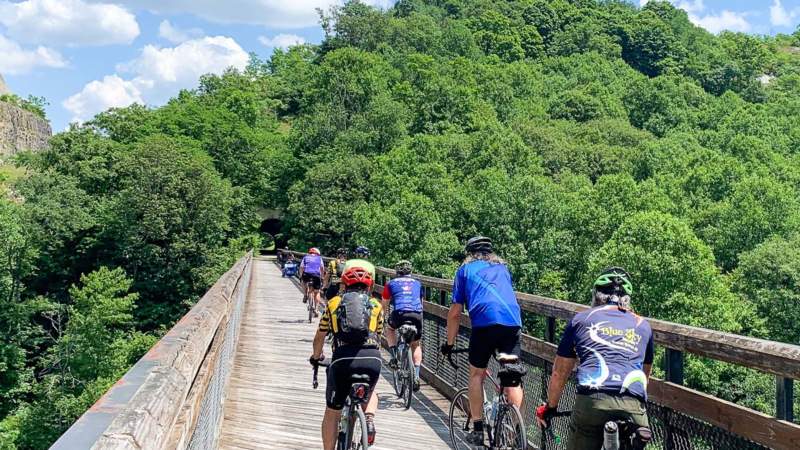Starting in Cumberland, Maryland and ending in Downtown Pittsburgh, the Great Allegheny Passage is a spectacular 150-mile nonmotorized path that soars over valleys, snakes around mountains, and skirts alongside the Casselman River, Youghiogheny River, and Monongahela River on a nearly-level, crushed-limestone surface. Tracing old footpaths and railroad corridors through the wilderness, it offers glimpses into the country’s westward expansion and industrial might. When paired with the connecting C&O Canal Towpath, it makes long-distance trail travel possible between Pittsburgh and Washington, D.C.
Along its route, the Great Allegheny Passage squeezes through the Cumberland Narrows, crosses the Mason & Dixon Line, tops the 2,392-foot Eastern Continental Divide, weaves through the breathtaking Laurel Highlands, bisects lovely Ohiopyle State Park, journeys through the region’s coke, coal, mining, and steel-making corridor, and ends at majestic Point State Park. It yields stunning views of waterfalls, gorges, river valleys, and farmland, especially from sweeping Helmstetter’s Curve and outside Big Savage Tunnel, near the delightful Bollman Bridge and within the imposing Keystone Viaduct, at both ends of the Pinkerton Tunnel, and via the soaring Ohiopyle Low and High Bridges.
The Great Allegheny Passage passes through a dozen welcoming trail towns, where overnight accommodations range from lovely bed-and-breakfasts to comfortable guesthouses, and from campgrounds to hotels. Local flavors abound at restaurants, bars and grills, creameries, and cafés, and festivals and celebrations take place throughout the seasons. Outfitters, tour operators, and shuttle services abound, making it possible for bicyclists and hikers of all ages to travel easily. Parking and branded wayfinding signage is ample from end to end.
Because of its easy access and many amenities, traveling the Great Allegheny Passage is a sought-after, “bucket list” adventure that delights local users as well as tourists from all 50 states and over 40 countries annually. It receives around a million visits every year, and tourists drive tens of millions of dollars into the local economy. Upon its completion, the GAP was the first path inducted into the Rails-to-Trails Conservancy’s Rail-Trail Hall of Fame.

